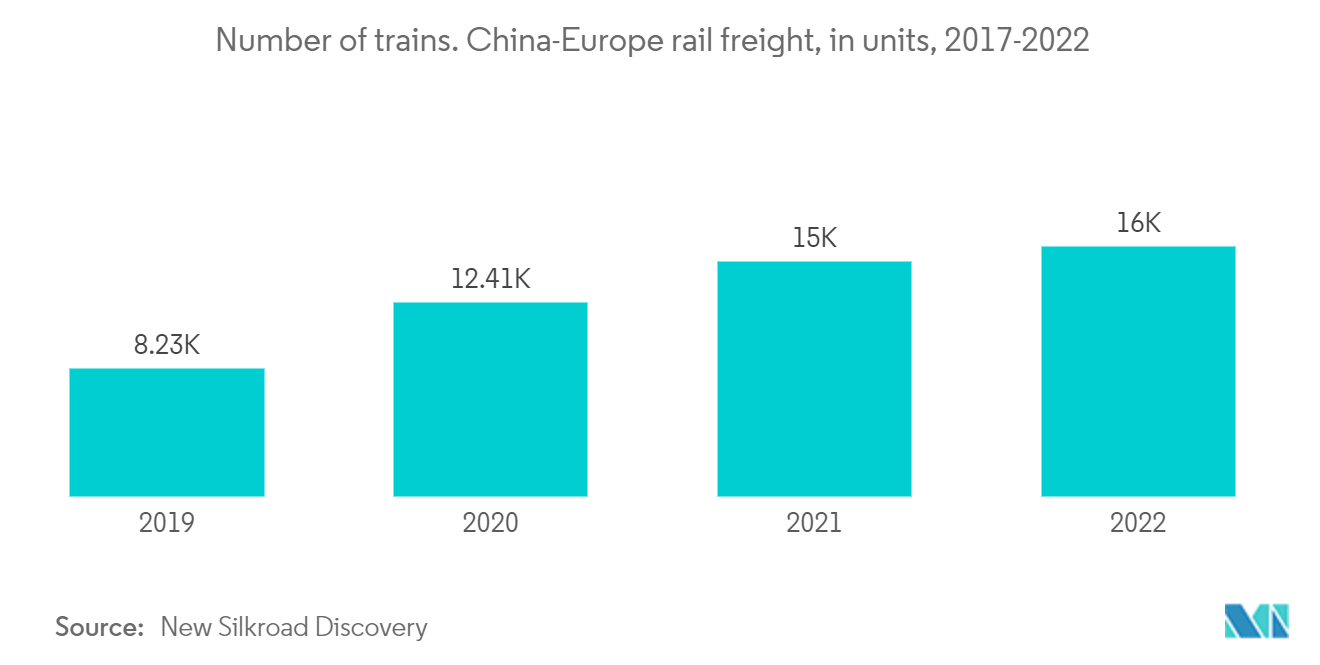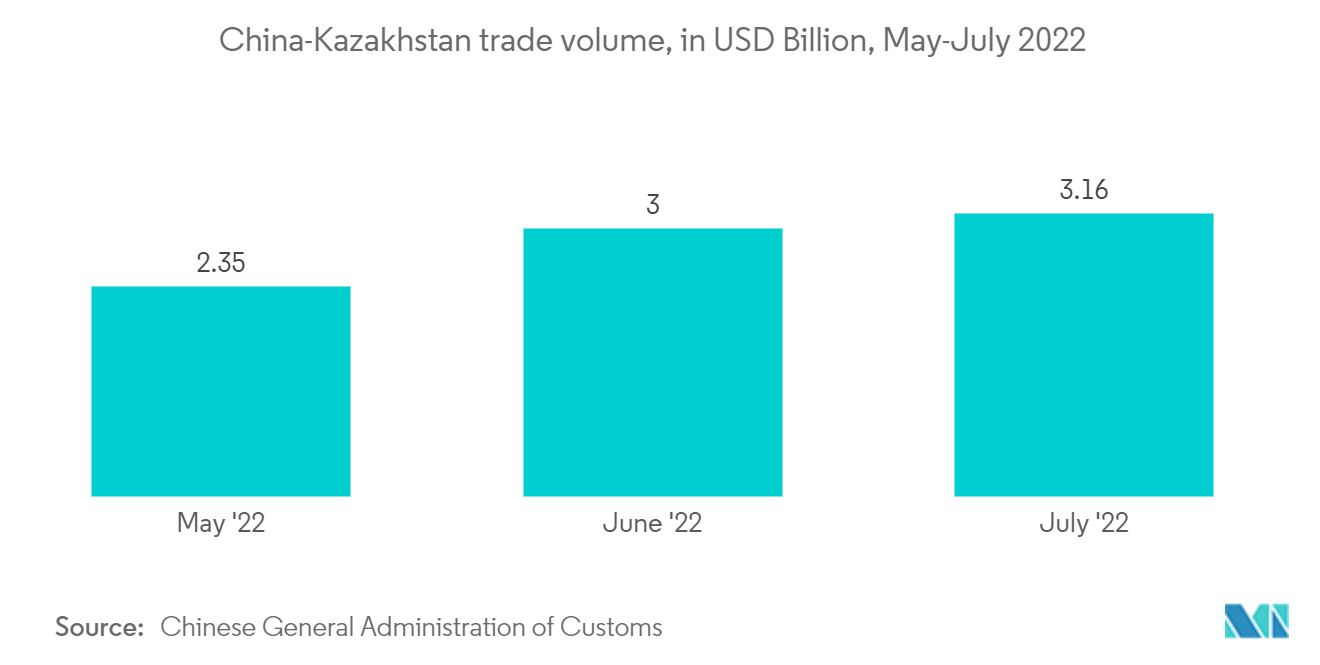Market Trends of China-Europe Rail Freight Transport Industry
This section covers the major market trends shaping the China-Europe Rail Freight Transport Market according to our research experts:
Increasing freight volume driving the market
Following a freight train from Xi'an in Northwest China's Shaanxi Province to Hamburg, more than 10,000 China-Europe freight trains have used the rail network so far in 2022, surpassing the same milestone achieved in 2021 by 10 days earlier. In the first eight months of the year, total cargo moved increased by 5% year over year to 972,000 TEUs. China began operating new rail and maritime routes in 2022, beginning in Xi'an and the southwest city of Chongqing and leading to the Black Sea, the Caspian Sea, and Romania. The ports along the freight rail route between China and Europe have all been modernized.
The ports along the freight rail route between China and Europe have all been modernized. Data showed that from the start of 2022, the capacity of the west channel has increased by 20.7%, that of the middle channel by 15.2%, and that of the east channel by 41.37%. According to China Railway, the China-Europe freight train has completed 92 operational routes connecting 200 towns in 24 European nations, enhancing economic relations between China and Europe and the Belt and Road Initiative.
The imbalance in the rail traffic flow between China and Europe is subtly shifting. The proportion of eastbound to westbound trains has increased in terms of train count, rising from 50.6% in 2016 to 81.5% in 2021. That indicates that 5 trains are leaving for Europe, whereas 4 trains are leaving for China.
The fact that freight train delivery times are getting worse cannot be disputed, nevertheless. The level of service is not higher than it was previously. Due to the epidemic, a significant amount of freight migrated from the ocean to the railway, making it difficult for many long-time customers to obtain their shipping space. Westbound trains experienced delays due to the backlog and congestion at the Chinese border ports. If nothing changes, these issues might persist during this year's busy times.

Kazakhstan, the gateway for China-Europe southern railroad is supporting the market growth.
China's exports to Kazakhstan increased significantly by 19.5% to reach USD 13.98 billion, while its imports from Kazakhstan increased significantly by 15.3% to USD 11.27 billion. In 2022, Kazakhstan and China's bilateral trade increased by 23.6% and astoundingly reached USD 31.2 billion. If the current favorable dynamic continues, the two parties may surpass their declared objective of USD 35 billion in bilateral commerce long before the target year of 2030. The increase in Kazakhstan's exports to China of agricultural products (133.7% growth), oil (USD 4.1 billion), gas (USD 1.2 billion), copper ores and concentrates (USD 2.04 billion), uranium and nuclear fuel (USD 817 million), and other ores (iron, zinc, and precious metals at just over USD 1 billion) is primarily responsible for this positive trade dynamic.
Kazakhstan received a total of USD 960 million, USD 1.85 billion, and USD 996 million in gross direct investment from China in 2020-2022. It's interesting to note that in 2022, the fourth quarter saw a half of all Chinese investment. By the end of 2022, more than 12,000 trains had through the Alashankou and Khorgos border crossings in the direction of both China and Central Asia or an average of 33 per day. Going ahead, the rail transit volume is anticipated to reach 24.5 million tons of cargo, or 1.1 million 20-foot containers, by the end of 2023; by 2025, the number is targeted to reach 30 million tons.
The main transportation infrastructure projects, including the railway line that runs through Almaty and connects to the new Bakhty border crossing in China's Western Xinjiang Region, are also being worked on by Chinese enterprises. Also, the amount of goods transported through this route nearly tripled to over 1 million tons as a result of the completion of the Trans-Caspian International Transport Route.
The Dostyk railway station, which is close to the Chinese border, is actively building terminal infrastructure, which is projected to increase the trans-shipment capacity from the 160,000 tons handled in 2021 to 480,000 thousand tons per year.
The commencement in November 2022 of the building of a new full-cycle, multi-brand vehicle plant in Almaty, with a size of 100,000 square meters and a total expenditure of USD 222 million, is an example of a substantial collaborative industrial business project. The industrial location is special since it will manufacture vehicles for three well-known Chinese automakers: Chery, Changan, and Haval.


